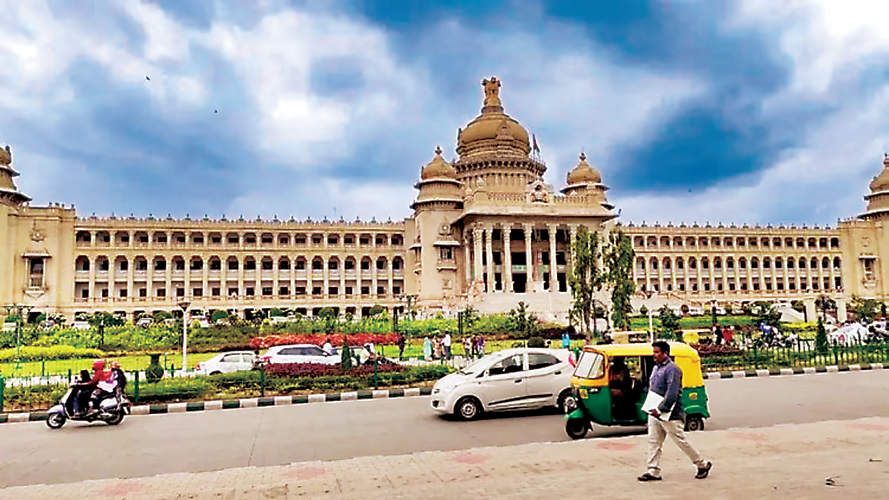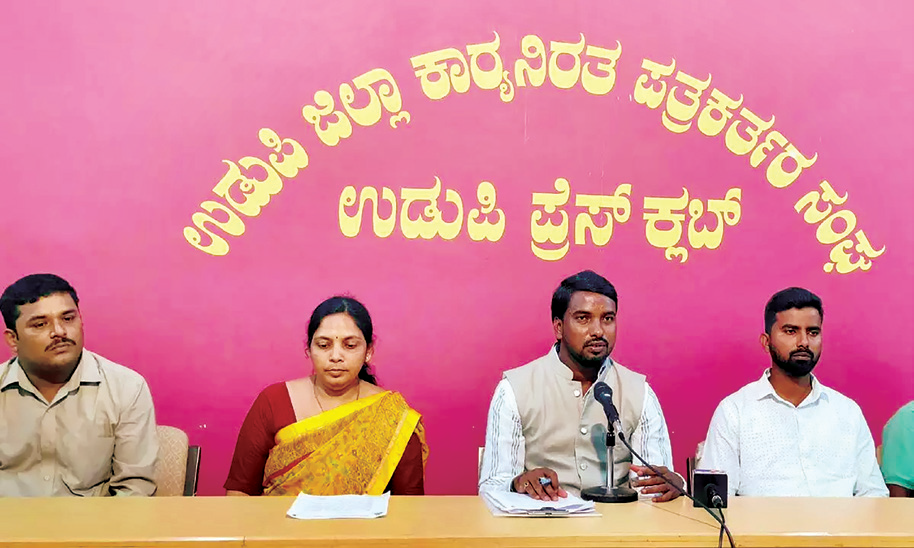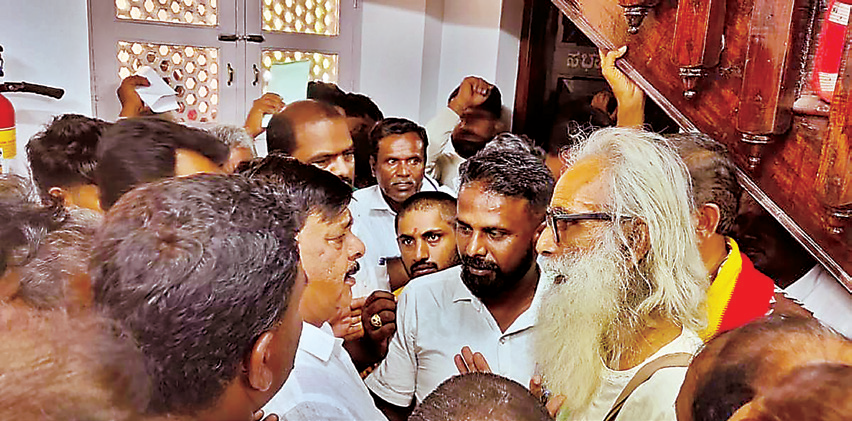
Monsoon swamps North but K'taka faces big deficit
Maqsood Maniyar | NT
New Delhi | Mandya: Even as torrential rains pounded several parts of north India on Sunday with 18 people killed in landslides and rain-related incidents, farmers in Karnataka and Mandya district in particular are caught between fear and hope as the mighty Krishna Raja Sagar (KRS) Dam continues to register low water levels.
However, things have improved in the past few days in the Old Mysore region due to rains in the catchment areas in Kodagu district.
KRS saw its water level rise 2.50 feet, going from 82 feet to 84.50 feet in the last 24 hours. The inflow into the dam due to heavy rains in the catchment areas is 14,556 cusecs and the outflow stands at 360 cusecs.
Last year, on the same date, the inflow was 38,858 cusecs and the outflow was 3,270 cusecs. The maximum level is 124.80 feet.
In contrast, on July 9 last year, water levels had been a robust 121.42 feet- a full 36.92 feet more compared to this year. Rainfall in the catchment areas of Kodagu district remains the most influential factor affecting dam levels.
As of Sunday, Kodagu has received only 468 mm of average rainfall, compared to the average of 2,840 mm.
Delhi records highest singleday rainfall for July since 1982, as per Met dept
Delhi recorded 153 mm of rain in 24 hours ending 8:30 on Sunday, the highest in a single day in July since 1982, the India Meteorological Department said. An interaction between a western disturbance and monsoonal winds is leading to an intense rainfall spell over northwest India, including Delhi which experienced the season's first "very heavy" rainfall. It was the third-highest single-day rainfall for July since 1958.
Other dams in the region have also been experiencing a dearth of inflow.
For instance, the Kabini reservoir has seen its water level hover around 41.46 feet as of Sunday against the maximum capacity of 65 feet. Last year, the water level at this time was 57.79.
Hemavathy reservoir in Chikkamagaluru district has 85.15 feet of water as of Sunday but its maximum level is 117 feet. Last year, the water level was 108.6 feet.
North Indian rivers in spate
Meanwhile, most rivers in North India, including the Yamuna in Delhi, were in spate. In cities and towns across the region, many roads and residential areas were submerged in kneedeep water with the civic system unable to hold on in the face of record rains.
With normal life paralysed, schools in Delhi and its adjoining NCR cities of Gurugram and Noida will be closed on Monday, according to officials. Railway services have also been hit.
The Northern Railways said it has cancelled around 17 trains and diverted around 12 others, while traffic has been suspended at four locations due to waterlogging.
In three separate incidents of landslides in Himachal Pradesh, where a red alert of extremely heavy rains has been issued for 10 districts, five people were killed.
Fourteen major landslides and 13 flash floods have been reported in the past 36 hours while over 700 roads have been closed, according to the Himachal Pradesh emergency operation centre.
Heavy monsoon rains in several parts of Punjab and Haryana led to massive waterlogging and flooding in low-lying areas, prompting authorities to swing into action.
The bountiful rains in many parts of India in the first eight days of July have bridged the rainfall deficit for the entire country, according to the IMD.
The cumulative rainfall in the monsoon season has reached 243.2 mm, which is 2 per cent above the normal of 239.1 mm.
 English daily published in Bengaluru & Doha
English daily published in Bengaluru & Doha






